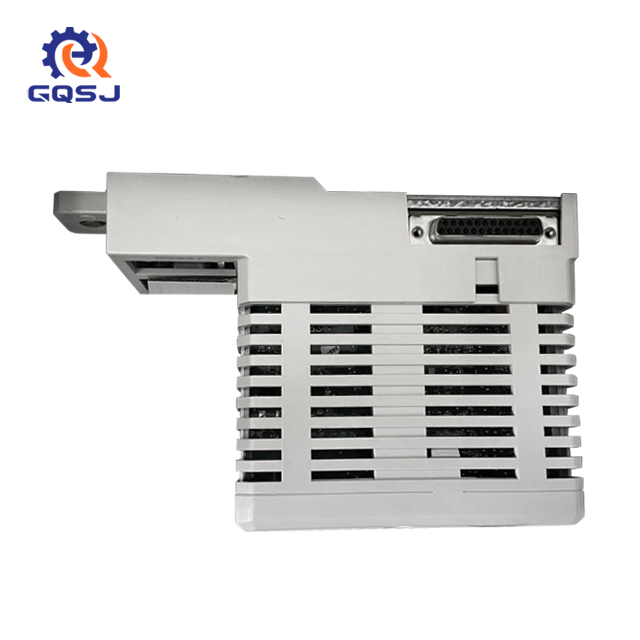Troubleshooting AC 800M Communication Interfaces: Common Issues and Solutions
Introduction
In industrial automation, communication is everything. The ABB AC 800M controller, a core component of the ABB 800xA automation platform, relies on its communication interfaces to connect with I/O modules, field devices, HMIs, and higher-level systems. When communication fails, production efficiency, safety, and reliability can all be at risk.
While AC 800M is designed for robustness, even the best systems encounter issues over time — from misconfigurations and network congestion to cable faults and protocol mismatches. The good news? Most communication problems can be quickly identified and resolved with a systematic troubleshooting approach.

1. Understanding AC 800M Communication Interfaces
The AC 800M supports multiple communication standards through dedicated Communication Interface (CI) modules or built-in ports. Each protocol has unique characteristics and troubleshooting requirements.
Common AC 800M communication options:
Ethernet (TCP/IP, Ethernet/IP, PROFINET) – CI867, CI871 modules, or built-in Ethernet port
PROFIBUS DP/PA – CI854A module
Modbus TCP/IP & RTU – Built-in Ethernet or CI853 module
FOUNDATION Fieldbus – CI860 module
IEC 61850 – CI869 module
Serial (RS-232/RS-485) – CI853 or third-party interface
Knowing which interface you’re dealing with is the first step toward effective troubleshooting.
2. Common Communication Problems and Solutions
2.1 No Communication with Field Devices
Symptoms:
Devices show as “offline” in Control Builder M
Red status LED on CI module
No data update in SCADA
Possible Causes:
1. Incorrect module configuration (wrong IP address, baud rate, or protocol settings)
2. Loose or damaged cables
3. Incorrect termination (PROFIBUS or RS-485)
4. Power loss to field devices
Solutions:
Verify configuration parameters in Control Builder M match device settings.
Use a network tester or multimeter to check physical connections.
For PROFIBUS or RS-485, ensure termination resistors are installed at both ends of the bus.
Confirm power supplies to connected devices are within specified voltage.
2.2 Intermittent Communication Loss
Symptoms:
Devices connect and disconnect randomly
Occasional data timeouts
Operators report “lag” in HMI updates
Possible Causes:
1. Electrical noise (EMI) from nearby motors or drives
2. Network congestion or excessive broadcast traffic
3. Loose connectors or poor crimping
4. Overloaded CI module due to too many devices
Solutions:
Use shielded cables and proper grounding.
Check network switch for loop prevention and optimize topology.
Inspect and re-crimp connectors.
Split large device networks into multiple segments or add an additional CI module.
2.3 Incorrect or Missing Data
Symptoms:
Wrong process values in HMI
Random spikes or dropouts in trends
Devices respond with incorrect data
Possible Causes:
1. Mismatched data mapping in Control Builder M
2. Incorrect scaling or engineering units
3. Data type mismatch (INT, REAL, BOOL)
4. Corrupted device firmware
Solutions:
Cross-check variable mapping between controller and field devices.
Adjust scaling factors to match device datasheets.
Update device firmware and controller software.
Use protocol-specific diagnostic tools (e.g., PROFIBUS analyzer) to check data frames.
2.4 Slow Communication Response
Symptoms:
HMI updates lag behind real process changes
Long delays in command execution
Batch process control feels sluggish
Possible Causes:
1. Low polling frequency in configuration
2. Network congestion from large data packets
3. Insufficient CI module performance for workload
4. Poor network design (too many hops)
Solutions:
Increase polling frequency where necessary (balance with network load).
Reduce non-essential data transfer.
Upgrade CI module or split workload.
Use managed switches to improve packet routing efficiency.
2.5 Protocol-Specific Issues
Ethernet
Cause: IP conflict, VLAN misconfiguration, or incorrect subnet mask.
Solution: Ensure unique IP addresses, correct subnet mask, and proper VLAN tagging.
PROFIBUS
Cause: Missing GSD file or wrong device address.
Solution: Load correct GSD file into project, verify node address matches DIP switch settings.
Modbus
Cause: Wrong byte order or register mapping.
Solution: Verify Modbus register map and endian settings.
FOUNDATION Fieldbus
Cause: Segment power supply issue or missing terminators.
Solution: Use FF diagnostic tools to check segment health and terminators.
3. Best Practices for Avoiding Communication Problems
Standardize Protocols – Reduce complexity by limiting the number of protocols in use.
Document Network Topology – Keep updated diagrams for troubleshooting.
Use Quality Cables and Connectors – Industrial-grade components reduce failures.
Enable Diagnostics – Many CI modules have built-in diagnostics; monitor them regularly.
Perform Preventive Maintenance – Schedule periodic checks for cable integrity and device status.
4. Real-World Troubleshooting Examples
Example 1: PROFIBUS DP Dropouts in a Cement Plant
Issue: Intermittent communication loss with motor control centers.
Root Cause: Loose PROFIBUS connector in a high-vibration environment.
Solution: Replaced with vibration-resistant connectors and improved cable securing.
Example 2: Modbus TCP Register Mismatch in a Water Treatment Plant
Issue: Incorrect pressure readings in SCADA.
Root Cause: Mismatched Modbus register mapping after device firmware update.
Solution: Updated register configuration in Control Builder M to match new firmware mapping.
Example 3: Ethernet IP Conflict in a Packaging Facility
Issue: Random disconnection of drives.
Root Cause: Two devices configured with the same static IP.
Solution: Implemented IP management policy and DHCP where possible.
5. Troubleshooting Workflow Checklist
Here’s a quick diagnostic workflow for AC 800M communication issues:
1. Identify the affected devices – Single device or entire network?
2. Check physical connections – Cables, connectors, terminations.
3. Verify configuration – IP addresses, baud rates, node IDs.
4. Review controller logs – Look for diagnostic messages.
5. Use protocol analyzers – PROFIBUS tester, Ethernet packet capture, Modbus diagnostic tool.
6. Test replacements – Swap CI module or device to isolate fault.
7. Document findings – For future reference and prevention.



